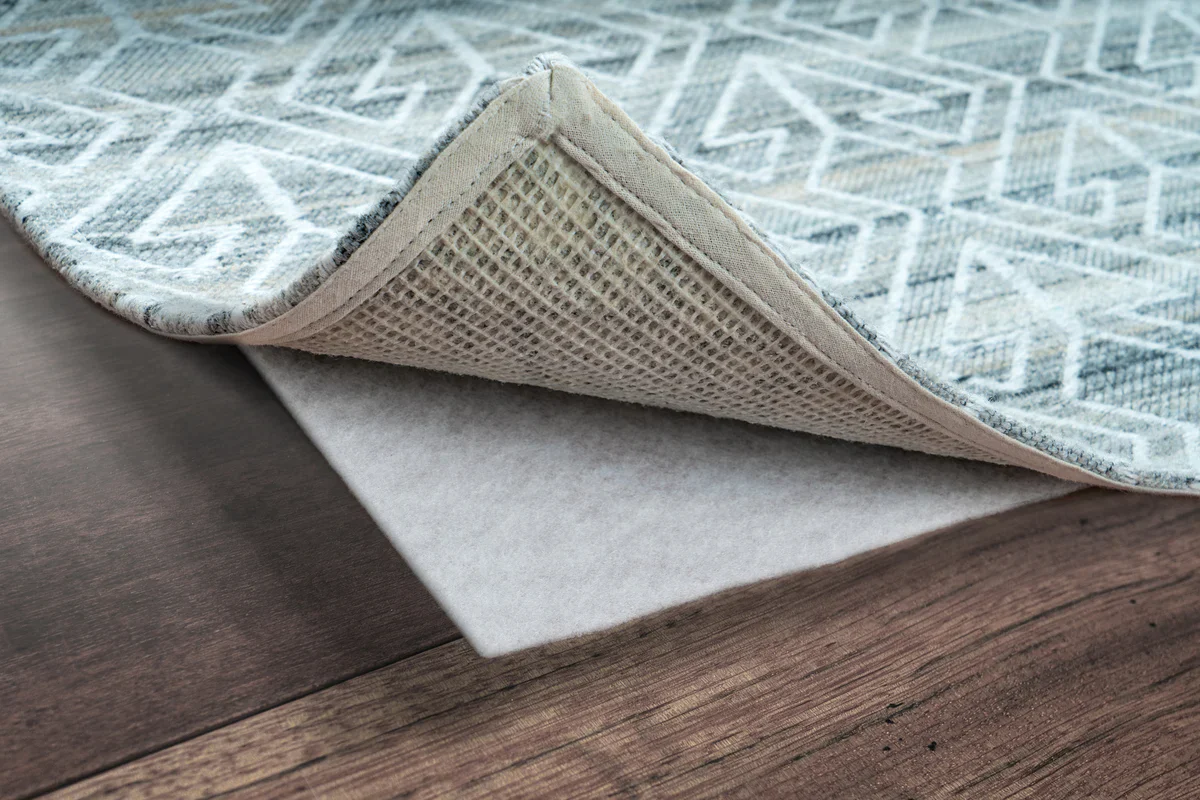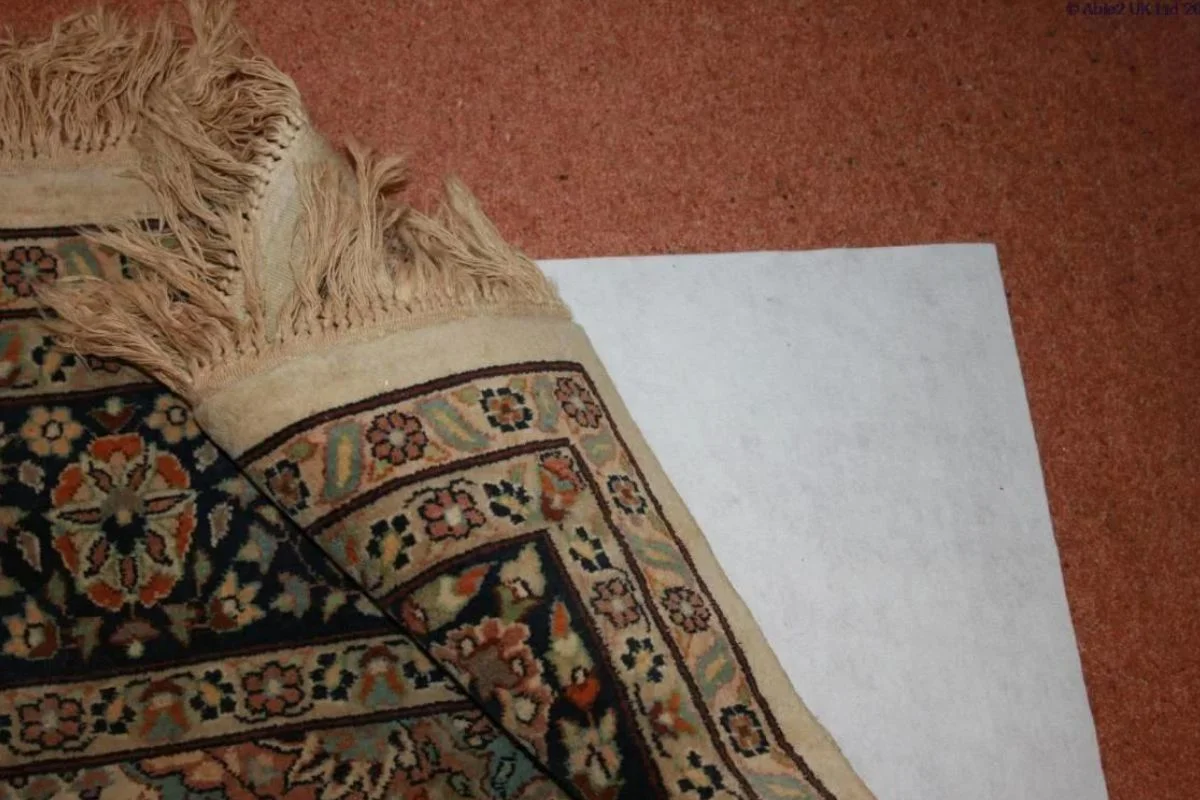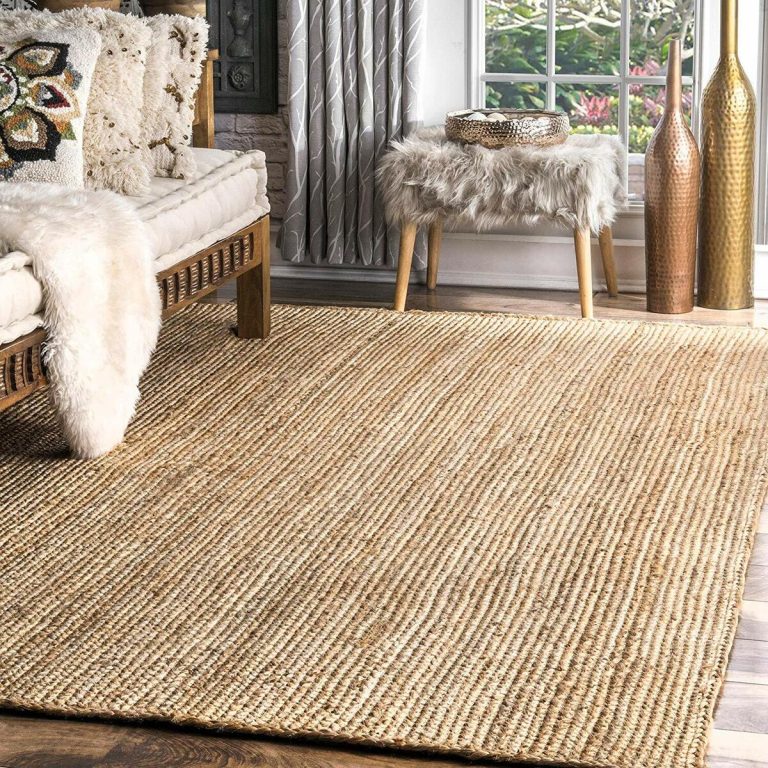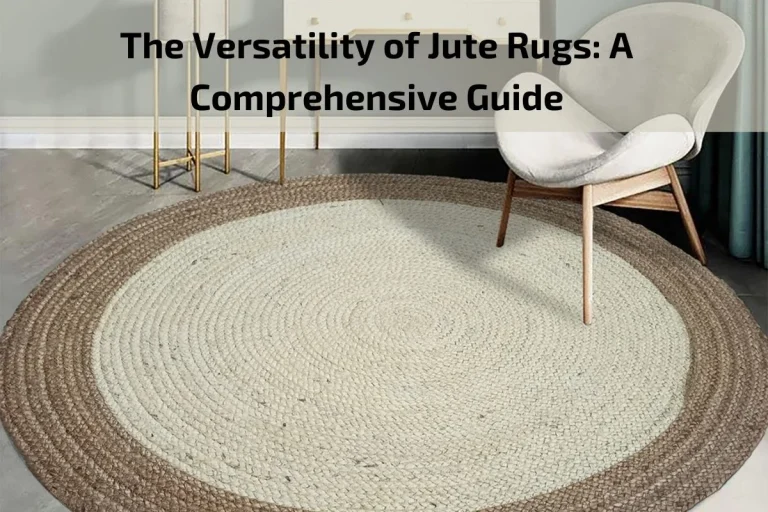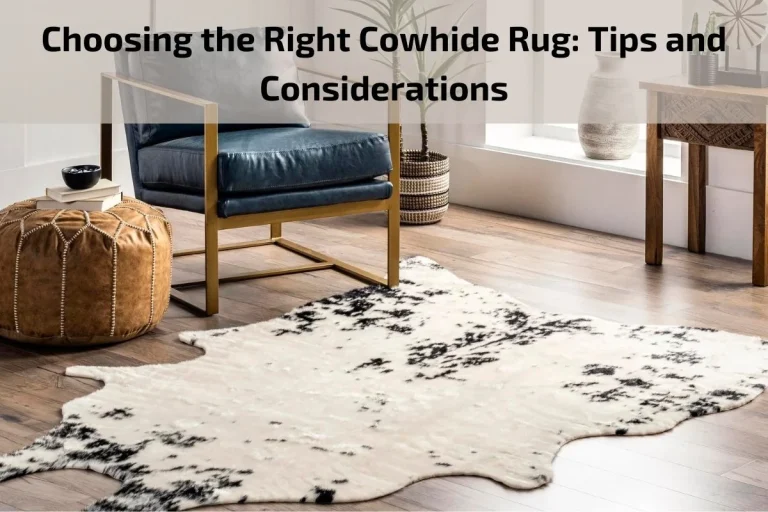Carpets are more than just floor coverings; they are essential elements of interior design that add warmth, comfort, and style to our living spaces. However, what lies beneath the surface of a carpet often goes unnoticed but plays a crucial role in its performance and longevity. This is where carpet underlay comes into play.
In this article, we delve into the often-overlooked world of carpet underlay, exploring its purpose, importance, and the benefits it brings to our homes. From providing cushioning and insulation to enhancing durability and soundproofing, underlay serves as the unsung hero that supports and protects our carpets from the ground up.
As we peel back the layers, we uncover the myriad ways in which underlay contributes to the overall look, feel, and functionality of our carpets. Whether you’re renovating your home, upgrading your flooring, or simply seeking to understand the finer details of carpet installation, this exploration of carpet underlay promises to shed light on its significance beneath the surface.
Join us on a journey to uncover the hidden world of carpet underlay, where comfort, performance, and longevity converge to elevate the experience of walking, lounging, and living on carpets. Let’s unravel the mysteries and unveil the purpose of carpet underlay, one layer at a time.
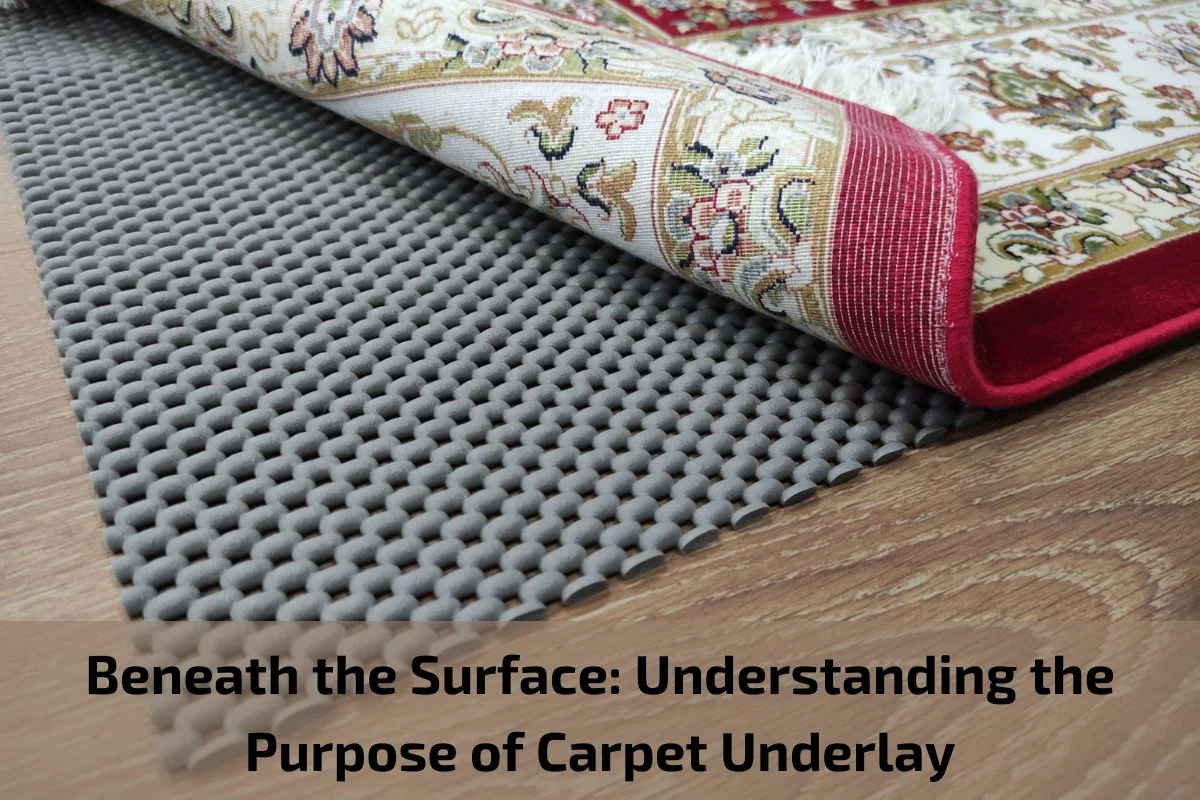
Importance of Underlay in Carpet Installation
Carpet underlay might be the unsung hero of flooring installations, but its significance cannot be overstated. Here’s why underlay plays a pivotal role in carpet installation:
Enhanced Comfort: Underlay provides a cushioning layer beneath the carpet, creating a softer and more comfortable surface underfoot. It absorbs impact from footsteps, making walking and standing on carpets more enjoyable and ergonomic.
Improved Insulation: Underlay acts as a thermal barrier, helping to retain heat and maintain room temperature. By preventing heat loss through the floor, underlay contributes to energy efficiency and reduces heating costs during colder months.
Sound Absorption: Underlay dampens noise and absorbs sound vibrations, making rooms quieter and more peaceful. It minimizes the transmission of footsteps and household noises between floors, creating a quieter and more harmonious living environment.
Protection for Carpets: Underlay serves as a protective barrier between the carpet and the subfloor, reducing wear and tear on the carpet fibers. It helps to distribute weight evenly across the surface, preventing premature deterioration and extending the lifespan of the carpet.
Smoothing Imperfections: Underlay helps to level out minor imperfections in the subfloor, creating a smoother and more even surface for carpet installation. It fills in gaps and irregularities, ensuring a seamless and professional-looking finish.
Enhanced Performance: By providing support and stability to the carpet, underlay enhances its performance and resilience. It helps to prevent wrinkles, ripples, and creases in the carpet, ensuring a uniform appearance and optimal functionality.
Definition and purpose of Carpet underlay
Carpet underlay, also known as carpet padding or carpet cushion, is a layer of material placed between the carpet and the subfloor during installation. It serves several important purposes in carpeting:
Cushioning: One of the primary functions of carpet underlay is to provide cushioning and support beneath the carpet. It adds a layer of softness underfoot, making the carpet more comfortable to walk on and enhancing the overall feel of the floor.
Insulation: Carpet underlay acts as a thermal insulator, helping to regulate room temperature by reducing heat loss through the floor. It creates a barrier between the carpet and the subfloor, helping to maintain warmth in colder months and improving energy efficiency.
Sound Absorption: Underlay helps to reduce noise transmission between floors by absorbing impact and dampening sound vibrations. It minimizes the sound of footsteps, voices, and other household noises, creating a quieter and more peaceful indoor environment.
Protection: Underlay provides a protective layer between the carpet and the subfloor, helping to prevent wear and tear on the carpet fibers. It absorbs the impact of foot traffic and furniture weight, reducing the risk of damage and extending the lifespan of the carpet.
Leveling and Smoothing: Carpet underlay helps to smooth out minor imperfections in the subfloor, creating a more even and uniform surface for carpet installation. It fills in gaps, cracks, and irregularities, ensuring a seamless and professional-looking finish.
Enhanced Performance: By providing support and stability to the carpet, underlay improves its performance and resilience. It helps to prevent wrinkles, ripples, and creases in the carpet, ensuring a smooth and durable installation.
Benefits of Quality carpets. Underlay
Quality carpet underlay offers a multitude of advantages that significantly enhance the performance, comfort, and longevity of carpets. Here are some key benefits:
Enhanced Comfort: Quality underlay provides additional cushioning and softness underfoot, making carpets more comfortable to walk on and lounge upon. It creates a plush and luxurious feel that adds to the overall comfort of the living space.
Improved Insulation: Carpet underlay acts as a thermal barrier, helping to retain heat and maintain room temperature. By reducing heat loss through the floor, quality underlay contributes to energy efficiency and helps lower heating costs, especially in colder climates.
Sound Reduction: Quality underlay absorbs impact and sound vibrations, minimizing noise transmission between floors and rooms. It helps create a quieter and more peaceful indoor environment by reducing the sound of footsteps, voices, and other household noises.
Protection for Carpets: Quality underlay provides a protective barrier between the carpet and the subfloor, reducing wear and tear on the carpet fibers. It helps distribute weight evenly across the surface, preventing premature deterioration and extending the lifespan of the carpet.
Improved Appearance: By smoothing out minor imperfections in the subfloor, quality underlay creates a more even and uniform surface for carpet installation. It helps prevent wrinkles, ripples, and creases in the carpet, ensuring a seamless and professional-looking finish.
Longevity and Durability: Quality underlay helps maintain the structural integrity of carpets by providing support and stability. It helps prevent premature wear and damage to the carpet, ensuring that it retains its appearance and functionality for years to come.
Health and Safety: Quality underlay contributes to a healthier indoor environment by preventing mold, mildew, and moisture buildup. It also helps reduce the risk of slips and falls by providing a stable and slip-resistant surface underfoot
Types of Carpet Underlay
Carpet underlay comes in various types, each offering specific benefits and suitability for different carpet installations. Here are the most common types of carpet underlay:
Foam Underlay: Foam underlay is one of the most popular types and is available in various densities and thicknesses. It is typically made from polyurethane foam and offers excellent cushioning and comfort underfoot. Foam underlay is lightweight, easy to install, and provides good thermal and sound insulation properties.
Rubber Underlay: Rubber underlay is known for its durability and resilience. Made from recycled rubber or synthetic materials, rubber underlay offers superior support and stability to carpets. It provides excellent sound absorption and thermal insulation, making it ideal for high-traffic areas and rooms where noise reduction is a priority.
Felt Underlay: Felt underlay is made from natural or synthetic fibers bonded together to create a dense and resilient padding. It offers excellent cushioning and support for carpets and provides good sound absorption properties. Felt underlay is durable, environmentally friendly, and suitable for use with most carpet types.
Combination Underlay: Combination underlay combines different materials to provide a balance of cushioning, support, and insulation properties. For example, some combination underlays may feature a layer of foam or rubber combined with a felt or fiber topping for added comfort and performance. Combination underlay offers versatility and can be tailored to specific carpet installation requirements.
Crumb Rubber Underlay: Crumb rubber underlay is made from recycled rubber granules bonded together to form a dense and durable padding. It offers excellent support and stability to carpets and provides superior sound absorption and thermal insulation properties. Crumb rubber underlay is environmentally friendly and suitable for use in residential and commercial applications.
Waffle Rubber Underlay: Waffle rubber underlay features a waffle-like pattern that provides cushioning and support for carpets. It offers good sound absorption and thermal insulation properties and is suitable for use with most carpet types. Waffle rubber underlay is lightweight, easy to install, and provides long-lasting performance.
Carpet Underlay for Different Carpet Types
Different carpet types require specific underlay characteristics for optimal performance. Cut-pile carpets benefit from denser underlays to maintain pile height and support foot traffic. Plush carpets need firmer underlays to prevent sinking, while loop-pile carpets often perform well with softer, cushioned layers.
For berber or textured carpets, medium-density underlays are ideal to prevent carpet distortion and maintain appearance. High-traffic areas with loop carpets require durable underlays that resist compression and flattening.
Commercial carpets in offices or retail environments typically use firm, resilient underlays such as rubber or crumb rubber to withstand heavy use. These underlays prolong carpet life, maintain comfort, and support acoustic and thermal insulation.
Selecting an underlay compatible with your carpet type ensures durability, comfort, and appearance. Manufacturers often provide guidance on recommended underlay types to maintain warranties and optimal performance.
Common Mistakes to Avoid
Many homeowners make mistakes when choosing or installing carpet underlay. One common error is selecting an underlay that is too soft or thin for high-traffic areas, leading to rapid carpet wear.
Incorrect installation is another issue, such as failing to join seams properly or using insufficient adhesive. This results in uneven surfaces, noise, and reduced durability.
Ignoring subfloor preparation can compromise underlay performance. The subfloor must be clean, dry, and level to prevent damage or uneven compression.
Using incompatible underlays for specific carpets can also cause problems. Always check manufacturer recommendations to maintain warranty coverage and optimal performance.
Avoiding these mistakes ensures maximum comfort, insulation, and carpet longevity, making underlay a worthwhile investment.
Maintenance and Care
Proper maintenance of carpet underlay enhances both comfort and longevity. Regular vacuuming removes dust and debris that could affect the carpet and underlay. Periodic inspection ensures there are no signs of compression, moisture damage, or mold.
For homes with pets or children, additional care may be required to prevent stains, moisture, and wear. Professional carpet cleaning every 12–18 months also benefits the underlay, preserving its cushioning and insulation properties.
Moisture control is critical. Underlay can retain dampness if exposed to spills or leaks, leading to mold or odor. Quick cleanup and proper ventilation prevent damage.
Overall, consistent maintenance ensures that underlays continue to provide comfort, insulation, and soundproofing, extending the life of both carpet and flooring system.
Maintenance and Care of Carpet Underlay
Proper maintenance and care of carpet underlay are essential to ensure its longevity and performance. Here are some important tips for maintaining and caring for your carpet underlay:
Regular Cleaning: Vacuum the carpet regularly to remove dirt, dust, and debris that can accumulate on the surface of the underlay. Use a vacuum cleaner with a brush attachment to gently remove dirt and particles from the underlay.
Spot Cleaning: Attend to spills and stains immediately to prevent them from setting into the underlay. Blot the affected area with a clean cloth or paper towel to absorb as much liquid as possible. Use a mild detergent diluted in water to gently clean the stain, then blot with a damp cloth to rinse. Allow the area to air dry thoroughly.
Prevent Moisture Buildup: Keep the underlay dry and well-ventilated to prevent mold, mildew, and moisture buildup. Avoid placing wet or damp items on the underlay, and ensure proper ventilation in areas prone to humidity or moisture.
Protect from Heavy Furniture: Place furniture coasters or pads underneath heavy furniture to distribute weight evenly and prevent indentations or damage to the underlay. Avoid dragging or sliding heavy furniture across the carpet, as this can cause friction and damage to the underlay.
Inspect for Damage: Regularly inspect the underlay for signs of wear, tear, or damage, such as rips, tears, or compression. Address any issues promptly to prevent further damage and ensure the underlay continues to provide adequate support and cushioning for the carpet.
Professional Cleaning: Consider professional cleaning services for deep cleaning the underlay every one to two years. Professional cleaners have the expertise and equipment to remove embedded dirt, stains, and odors without causing damage to the underlay.
Replace When Necessary: Monitor the condition of the underlay and replace it when signs of wear or deterioration become apparent. Over time, underlay may lose its cushioning and support properties, so replacing it when necessary ensures optimal performance and longevity of the carpet.
By following these maintenance and care tips, you can prolong the life of your carpet underlay and ensure it continues to provide comfort, support, and protection for your carpets for years to come. Proper maintenance and care of the underlay contribute to the overall health and longevity of your carpeted floors, creating a comfortable and inviting living environment.
How to Choose the Right Carpet Underlay
Choosing the right carpet underlay requires careful consideration of several factors. Carpet type is critical, as some carpets require denser underlays for support, while others perform well with softer layers. For instance, plush carpets benefit from firmer underlays to prevent excessive sinking.
Traffic level determines durability needs. High-traffic areas like hallways and living rooms require robust, dense underlays, while bedrooms or low-traffic spaces can use softer options. Foam or felt underlays are suitable for light traffic, while rubber or crumb rubber excels under heavy use.
Comfort preferences also influence selection. Soft underlays provide luxury and a plush feel, while firmer underlays offer support and stability. Rooms where people stand frequently, such as kitchens, benefit from cushioned yet firm underlays.
Insulation requirements matter. Thicker underlays offer better thermal and sound insulation, making them ideal for multi-story homes or cold climates. Additionally, consider moisture resistance for areas prone to dampness, using materials such as rubber or treated felt.
Budget is another consideration. Premium underlays offer enhanced durability and comfort but come at a higher price. Balancing cost with performance ensures the best long-term investment.
Finally, check for compatibility with flooring regulations and warranties. Some carpet manufacturers require specific underlay types to maintain warranty coverage. Choosing the right underlay ensures comfort, durability, and compliance with manufacturer guidelines.
Installation Methods for Carpet Underlay
Installing carpet underlay properly is crucial for its effectiveness and longevity. The first step is preparing the subfloor, ensuring it is clean, dry, and level. Any bumps or debris can affect underlay performance and carpet appearance.
Stretch-fit installation is common, where the underlay is cut to fit the room and secured with tack strips along the edges. The carpet is then stretched over the underlay for a smooth finish. This method works well for residential spaces and provides excellent cushioning.
Glue-down installation involves adhering the underlay directly to the subfloor using adhesive. This method is often used for commercial spaces or high-traffic areas to prevent movement. Proper adhesive selection is important to avoid damage to the underlay or carpet.
Double-stick tape can be used for temporary installations, particularly for rugs or lightweight carpets. While less permanent, it provides sufficient grip for low-traffic areas.
Seaming is important for larger rooms. Underlays should be joined using appropriate tape or adhesive to avoid gaps or uneven surfaces.
Professional installation ensures proper alignment, smoothness, and durability. Whether DIY or hired, following manufacturer instructions guarantees maximum comfort, insulation, and carpet protection.
Carpet Underlay for Comfort and Luxury
One of the primary reasons homeowners invest in carpet underlay is comfort. High-quality underlays provide a soft, cushioned surface underfoot, making walking, standing, and even sitting more enjoyable. Luxury underlays such as memory foam or thick felt enhance the plushness of carpets, creating a hotel-like experience at home.
The cushioning effect not only improves comfort but also protects joints and reduces fatigue when standing for long periods. This is especially beneficial in rooms where people spend considerable time on their feet, such as living rooms or playrooms.
Luxury underlays also enhance the aesthetic appeal of carpets by preventing sagging and maintaining a smooth, uniform surface. They allow carpets to retain their shape and pile height, preserving their visual and tactile qualities for years.
In addition, luxury underlays often incorporate advanced materials that provide additional benefits, such as moisture resistance, hypoallergenic properties, and improved thermal insulation. Investing in a high-quality underlay ensures that your carpet not only looks better but also feels better, combining comfort, durability, and performance.
Conclusion
In conclusion, proper maintenance and care of carpet underlay are essential to ensure the longevity and performance of your carpets. By following the tips outlined above, you can protect your underlay from damage, maintain its comfort and support properties, and prolong its lifespan.
The most important frequently asked questions about Carpet Underlay
Why is carpet underlay important?
It improves comfort, sound insulation, and extends the carpet’s life.
Does underlay affect carpet feel?
Yes, it makes carpets softer and more comfortable underfoot.
Is underlay necessary for all carpets?
While optional, most carpets perform better with underlay.
What is density in underlay?
Density measures firmness; higher density = more support and durability.
Can underlay prevent carpet wear?
Yes, it absorbs impact and reduces stress on carpet fibers.

